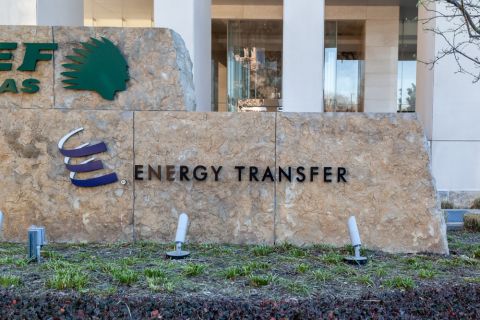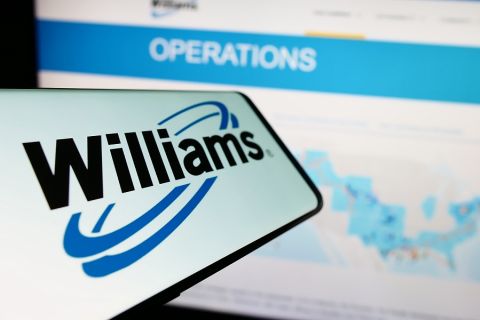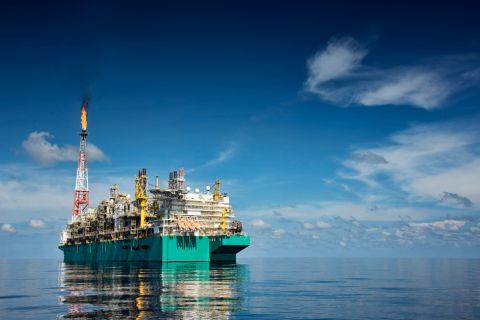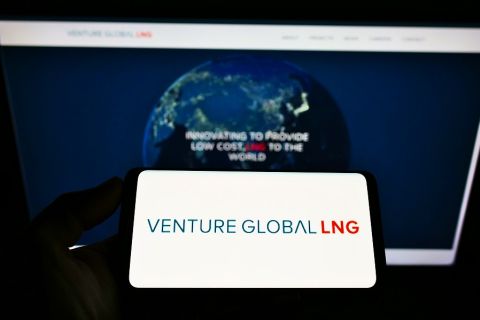GE Energy Financial Services invests across the capital structure—from debt to equity—and across the global energy industry. Driven by today’s resurgence of oil and gas production, the firm continues to invest in the U.S. oil and gas midstream space.
Recently, to help fuel the build out of unconventional oil, gas and gas liquids infrastructure to support North American shale development, GE Energy Financial Services invested in Howard Energy Partners LP, which is the owner and operator of 450 miles of natural gas pipelines in the Eagle Ford shale of South Texas. The investment helped Howard Energy double its size when it used the capital to partially fund the acquisition of Meritage Midstream Services’ natural gas gathering assets in South Texas.
At closing, GE acquired a 30.6% stake in Howard Energy, joining other investors such as Crosstex Energy LP, Quanta Services Inc. and Clear Springs Energy Co. LLC.
To date, GE Energy Financial has almost $3 billion of investments in midstream assets, including some 43,500 miles of gas pipelines in North America and gas distribution, gathering, processing, storage, terminals, refining, master limited partnerships and liquefied natural gas (LNG) facilities. It recently expanded its focus beyond gas infrastructure to petroleum logistics terminals, refined products and oil and gas liquids.
Since 2003, president and chief executive Alex Urquhart has been leading GE Energy Financial Services’ operations. He joined GE in 1981 and moved to GE Capital in 1985. He led a wide variety of structured investments, ranging from debt and lease financing to preferred stock and equity in the U.S. and internationally.
In 1993, Urquhart became senior vice president and director of new business development for GE Structured Finance—predecessor to GE Energy Financial Services—and in 1994 he became senior vice president and director of infrastructure finance. In 1996, he was appointed executive vice president and director of domestic origination for GE Structured Finance, with responsibility for the company’s domestic origination in energy, telecom, industrial and transportation business units. He became managing director of Global Energy in 1998, and was appointed an officer of GE in April 2005.
Urquhart holds a master’s degree in business administration from the University of Connecticut and a bachelor’s degree from the Virginia Polytechnic Institute and State University.
MIDSTREAM What drew you to work in this industry, initially?
URQUHART I am an engineer by training. When I joined GE in 1981, it was during the early days of the independent power market. That was a time of change—from vertically integrated utilities that built all the power assets in the country and ran all the utilities, to the creation of a new group of independent power producers. I initially worked with GE teams that were providing equipment and services to those new players. It became very interesting because these new entities had to be financed. In 1985, I found an opportunity to join GE Capital to provide the capital that these independents needed. They weren’t the big, established utilities. They were the new independent power upstarts and many of them were in the Houston area—companies like CoGenTech Inc. and others.
MIDSTREAM So you’ve been there since the beginning.
URQUHART I’ve been part of this business that’s been built over the years, which started on the power side and then expanded into oil and gas. Today, we provide everything from construction lending right on through equity financing, covering the entire energy industry from, as I like to say, wellhead to wall socket. I run the investment arm of GE Capital that invests in energy, and midstream is an important piece of that.
MIDSTREAM When did GE start investing in midstream?
URQUHART We made some investments in midstream as far back as the late 1980s, and really made it an investment focus during the past 10 years. We have a team in Houston run by Dan Castagnola that makes it a focus. Over that period, they’ve invested in numerous deals and today, we have about $3 billion of investments on our books. For example, we had a major investment in a transaction called Cross-Country Energy, which held some of the former Enron Corp. pipeline assets. We have an investment in Regency Energy Partners LP, and we participated with Regency on the construction of big pipelines in the Haynesville shale. We also own part of Southern Star Central, which owns and operates a 6,000-mile interstate natural gas pipeline and associated storage facilities in the Midwest and Midcontinent regions. And we are involved in a big LNG storage facility in Mississippi, as well as some offshore facilities in the Gulf.
MIDSTREAM Do you see further opportunities in this space?
URQUHART It’s a pretty exciting time for us right now, and for the industry, because natural gas obviously has become a much more prolific fuel than it was before, due to the new supply that’s come from the shales and as a result of horizontal drilling and hydraulic fracturing. This increase in natural gas supplies creates a demand for new infrastructure, particularly because a lot of that natural gas is not in the same places as the gas had been before, such as the Marcellus shale.
MIDSTREAM Does that create any challenges?
URQUHART This new dynamic might change the attractiveness of existing assets. For example, I think North Dakota is a bigger oil producer than Alaska now. Think of the infrastructure needed for North Dakota to move that crude to market. There are probably some crudes that were going to market from other areas that will be displaced, will have to change flow direction, or will be otherwise impacted. We think a lot about the portfolio we have and how the assets we have will be impacted by these changes.
MIDSTREAM Like the Marcellus shale play?
URQUHART Sure. Just generally speaking, although there was always Appalachian gas, some people suggest that the Marcellus could someday contribute about 20% of the country’s gas supply. So we are suddenly going to have 20% sitting virtually in the Northeast where the demand is, but the country was built with infrastructure to move most of the supply from the Gulf Coast to the Northeast. That creates opportunities but will create some challenges for existing assets. Also, we’ve seen some old facilities that could be brought back into service. It’s creating a lot of change. Within periods of change there’s both great opportunity and potentially peril. So we’re actively involved in managing both.
MIDSTREAM Have you seen any opportunities for investment in these natural gas liquids pipelines or processing?
URQUHART That’s the trend. That’s what everybody talks about. No question people have shifted toward liquid-rich plays. The Howard Energy investment is a midstream set of assets in the Eagle Ford shale play. This portion of the Eagle Ford is very liquids-rich, so we think there’ll be a lot of continued drilling because of that. Therefore, our system will increase in size and value. Still, the consensus is, longer term, that dry-gas plays will in fact be an important part of production going forward, so that infrastructure will recover over time.
MIDSTREAM What criteria do you use to determine investment opportunities?
URQUHART We absolutely look at management. In every investment that we make, whether it is midstream or across the energy space, 30 years of experience in this space tells us that the quality of our partners is essential. That’s the most important criteria. Beyond that, we want to be sure that their activities are economic. We need to understand the economics of production in any field. Are the reserves adequate? What are the economics of their production? We also want to understand the area’s competitors. Also, we look at basis and differential risk. We’ve seen situations where basis differentials can have a huge impact.
MIDSTREAM Do you prefer a fee-based revenue model in your midstream companies?
URQUHART Yes. Many of these systems have contracts for usage, so the producers tell you that if you build it, they’ll use it, and they’ll pay you. Or they can be based on acreage dedications where they’ll pay you if they develop the acreage. Obviously, that has a greater degree of risk, because now you have to take a view as to whether that acreage will be developed. But most of the transactions we’re involved in have some form of contract support from the shippers and producers. But even if they’re contracted, we like to understand the underlying economics to be sure that they’re economically viable and the partners are the right partners. We want to make sure the technical feasibility is there. Basically, we like long-lived, essential-use assets that produce cash flows that we feel we can predict over time. Also, we always look very closely at any environmental issues that might be there.
MIDSTREAM Do you see many environmental risks?
URQUHART As a company, we are very supportive of shale development. I think the effects of shale development have probably had a bigger effect on stimulating our economy than anything else, government led or not. Low energy prices also have played a role in stimulating the economy. But obviously, there are folks that are concerned with the impact on the environment. Our view is that the shales are a great thing, but new activity has to be done thoughtfully and done with responsibility.
MIDSTREAM What is your preferred sweet spot for investments?
URQUHART Ideally, we like to find investments between $100- and $250 million. That being said, we will also look at a project that might be $1 billion dollars, because the equity check can be divided between partners. We often have partners in those transactions.
MIDSTREAM Do you have any preference between gathering, transmission, processing and storage?
URQUHART No. Usually gathering and processing go together for us. Transmission long-haul pipelines can be something different and storage is often something different, but we do sometimes see them all together. Processing, to the extent it’s all fee based, would have the most potential commodity risk in it. Therefore, if I were to invest in it, I’d probably want to have smaller investments, and they’d be at higher returns and less levered. Transmission is probably the least risky, particularly if it’s long haul, because there are firm commitments. There, we would leverage higher and accept a lower turnover. We’re involved in a big LNG terminal that has a series of off-take commitments in excess of 20 years. We feel pretty good about that. And we’ve been involved in all sides of the storage piece.
MIDSTREAM When do you typically get involved in a new project?
URQUHART We’ve built up quite a team here of engineering and construction people so we can invest during construction. As is often the case with construction projects, companies can run into some issues that create delays or cost overruns. If an operator is good at managing those issues, however, it can generate attractive returns. We’re good at managing those types of issues, and we’ve been willing to invest during construction, which I think is somewhat unique for an investor. Not everyone does that.
MIDSTREAM What else is unique about GE Energy Financial Services?
URQUHART In our business, which has about $20 billion in assets across the energy space, we have the perspective of a lender and an equity investor. We have the perspective of an investor in upstream reserves and downstream power plants. We’ve invested in renewable energy, power plants with gas turbines and coal plants. We even invest in technology companies that are developing alternatives to coal and gas. So I’ve seen, in my tenure, this industry from all perspectives, which distinguishes us from other investors. Therefore, our strengths of looking at cash flows, determining their predictability and putting the right capital and structure in place to invest against them are fairly unique.
Recommended Reading
Energy Transfer Asks FERC to Weigh in on Williams Gas Project
2024-04-08 - Energy Transfer's filing continues the dispute over Williams’ development of the Louisiana Energy Gateway.
Apollo Buys Out New Fortress Energy’s 20% Stake in LNG Firm Energos
2024-02-15 - New Fortress Energy will sell its 20% stake in Energos Infrastructure, created by the company and Apollo, but maintain charters with LNG vessels.
Williams CEO: Louisiana Energy Gateway Start Temporarily in Limbo
2024-03-21 - Williams CEO Alan Armstrong said the project still moving forward after hitting a snag in a dispute with Energy Transfer but lacks a definitive start date.
Canada’s First FLNG Project Gets Underway
2024-04-12 - Black & Veatch and Samsung Heavy Industries have been given notice to proceed with a floating LNG facility near Kitimat, British Columbia, Canada.
Venture Global Acquires Nine LNG-powered Vessels
2024-03-18 - Venture Global plans to deliver the vessels, which are currently under construction in South Korea, starting later this year.





